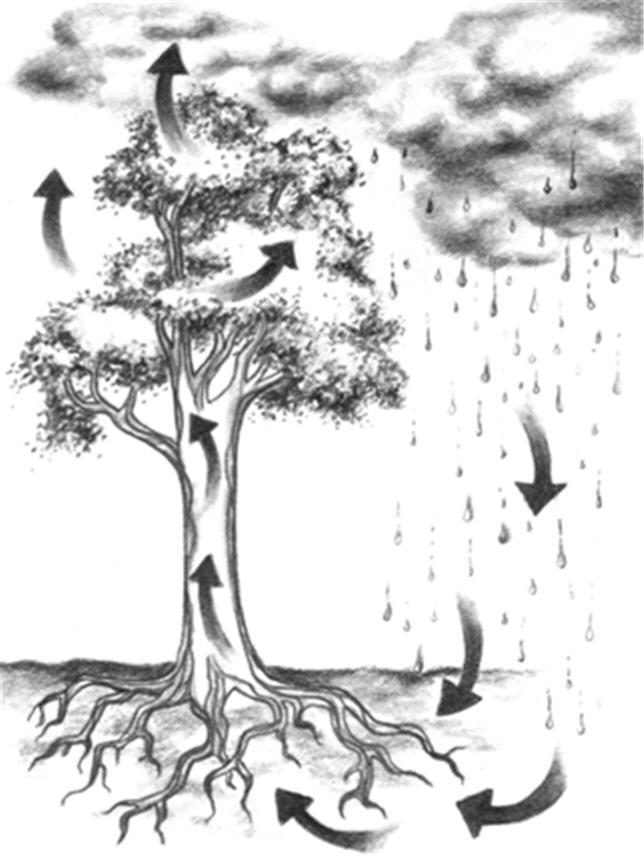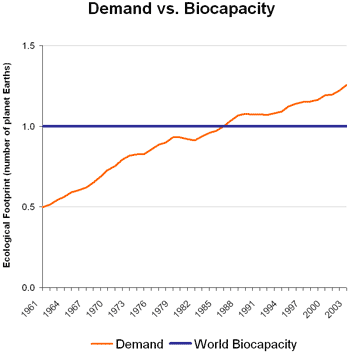Bernie Madoff sure made a name for himself, didn't he? First he made a name for himself as a "Wall Street Genius" whose coveted firm not only promised, but consistently delivered, extraordinarily high annual returns on investment, even when the economy was down. More recently he made a name for himself as the architect of the largest and most notorious "Ponzi Scheme" in history, bilking investors out of as much as 50 billion dollars!
So what is a Ponzi scheme, anyways? A Ponzi scheme is a fraudulent investment operation that promises, and delivers (at least for a while) exceptionally high and consistent financial returns to investors. These returns are paid to its investors from their own money, and the money paid by subsequent investors, rather than from any actual profit earned by bona fide income generating investments (such as manufacturing, mining, or rental income). In ways similar to "pyramid schemes" or "chain letters", in order for a Ponzi scheme to work, it must continuously attract an ever increasing pool of investment from unsuspecting customers, in order to provide an ever increasing supply of money to draw upon to maintain payments to its ever increasing pool of investors. The trick is to promise such glorious results that the greed factor overcomes its victim's common sense as they turn a blind eye to the fact that the scheme lacks a solid foundation and can't go on forever. It is absolutely critical to the success of all Ponzi schemes that an aura of respectability and impeccability be maintained for as long as possible, for as soon as suspicions spread concerning the fraudulent nature of the business, new investments dry up and the Ponzi scheme collapses, since it has no source of true earned income with which to maintain payments to investors.
So, is it true that we are running our planet like a Ponzi scheme? And if this is true, does it mean that we must inevitably face collapse, as all Ponzi schemes must eventually end in catastrophe?
The illusion that the "Free Market" is the logical savior of our world has been maintained by the promise of riches and an ever increasing standard of living and lifespan that has been demonstrated by the industrialized world for the past several hundred years. On the surface, who can look at the apparent success of America, and not come to that quick conclusion? However, when you look deeper, you will find that this success is built on a business model based upon exponential growth, and that this growth must be fed by a similar exponential growth in consumption of energy, natural resources, raw materials, and in the continuous expansion to new markets. All of this is well and good when the world has an abundant supply of undeveloped lands and unused resources, but it starts coming apart as that same world approaches its natural limits to growth and consumption.
Our world-wide Ponzi scheme got its start with the industrial revolution in Western Europe, and it was colonialism that provided ever increasing sources for the raw materials and markets that kept this giant Ponzi scheme rolling. It spread to America with the colonial takeover of vast untapped resources and huge tracts of lands previously occupied by Native American hunter-gatherers. As America industrialized, its population grew and its resources were drawn down, the giant Ponzi scheme continued to grow through globalization and it continued to feed its ever growing appetite by drawing down the natural resources in the world's oceans, forests, and more remote areas, and by expanding it markets into the farthest reaches of the globe. We are witness to a five hundred year run on this giant ever-expanding global Ponzi scheme, and unless we change the way we are playing this game, that run is now drawing dangerously close to a natural and catastrophic conclusion.
Here is a brief summary of a few current trends that illustrate my point:
1.Trees: About 1/2 of the world's forests are already gone (most were cut in the last 50 years), and a significant percentage of the rest are in trouble. At the current rate of destruction, it has been estimated that the world's rainforests will be completely eliminated within forty years. Trees play a necessary role in stabilizing our planet's weather, atmosphere and soils. A single large mature tree has the evaporative surface area on its needles or leaves equivalent to a 40 acre lake. A process called "desertification" occurs near areas that have been deforested once the trees stop recycling moisture back into the atmosphere to fall as rain somewhere down wind. A recent study shows that deforestation contributes roughly 25% of global greenhouse gas emissions every year.

Figure 1. Trees and their part in the water cycle
(Illustration by Karen Frances)
2.Atmosphere: Global greenhouse gas emissions have increased by a factor of four since 1950. We have been burning fossil fuels for over 500 years, but half of all of those burned fuels have been consumed in the past thirty years! There is a scientific consensus to 90% certainty that these atmospheric changes will result in catastrophic, potentially civilization busting, climate changes within the next 50 years. Even if you do not believe in global warming, data indicates that the increasing concentrations of CO2 in the atmosphere (the primary greenhouse gas) caused by our rapidly increasing consumption of fossil fuels, is increasing the acidity of the oceans, and that if this trend continues much longer, it has the potential to kill most of the planktons, diatoms, and coral reefs of the ocean, knocking out the bottom of the food chain, killing most of the life in the oceans of the world, and destroying one of the legs of our world's oxygen cycle.
3.Oceans: 11 out of 15 of the world's major ocean fisheries are either already in collapse, or are in serious decline and danger of collapse. All large open ocean predatory fish, such as marlin and tuna, are already 90% depleted. By 2004, an estimated 20% of the world's coral reefs had been destroyed (up from just 11% in 2000), an additional 24% were close to collapsing, and another 26% were under long-term threat of collapse. A recent British government report showed a drop in the world's oceanic zooplankton of an astounding 73% since 1960. Zooplankton are a critical element in the bottom of the world's food chain as well as its oxygen cycle.
4.Oil and other fossil fuels: Our modern industrial global machine essentially eats, sleeps, and sh_ts oil. Nearly all of the world's giant oil fields (they produce over half the world's oil) are mature and exhibit declining rates of oil production. In 2008, the International Energy Agency (IEA) shocked the world when it released an authoritative public study revealing that the world's oil fields are declining at an average rate of 9.1%, which is much faster than previously thought. Even with huge capital investments to implement Enhanced Oil Recovery (EOR) methods, this rate of decline would only improve to 6.4%. What does this mean? It means that if our world is to maintain its current rate of oil consumption (our world's recent globalization has been fueled by an annual oil production growth rate of something like 10%), then we would need to find and develop a Saudi Arabia's worth of oil every year for the next year or two from now to eternity--an impossible fantasy!
5.Soil: A third of the original top soil in the United States is now gone. It has been estimated that the world has from 50 to 100 years of farmable soil, using current farming practices. The US has cut soil losses to 18 times the rate of nature's replacement, the developing world averages a soil depletion rate of 36 times natural replacement, and China averages 54 times the rate of replacement.
6.Fresh water: Irrigated land comprises only 16% of the world's croplands, but produces 40% of the world's crop production. Many of the world's major rivers (China's Yellow River, America's Colorado River, the Nile, the Rio Grande, the Ganges, the Indus, the Amu Darya, the Syr Darya, and Africa's Chao Phraya) now run dry, or nearly dry, for significant parts of the year due to expanding irrigation and population demands. Unsustainable over pumping from aquifers is causing increasing salinity, lowering aquifer levels, and failed wells in many of the world's irrigated bread baskets, such as California's Central Valley, the US' giant south central Ogallala aquifer, China's grainbelt middle plains, India's principle breadbasket, North Africa, and the Arabian Peninsula.
If the previous list is not enough to convince yourself that we are operating a giant Ponzi scheme, and that we are running out of new sources of energy, untapped markets, and raw materials to keep it running, then the following two figures should open your eyes.
Figure 2. Ecological footprint by region.
(Illustration courtesy of Global Footprint Network)
Figure 2 depicts a scientifically calculated global footprint by region. What this show us is that if our current planetary population of nearly 7 billion people were to live like we do here in North America, we would need an Earth with 9 1/2 hectares worth of bioproductive land per person to supply us with the necessary raw materials, and to absorb our wastes. Yet we now have only roughly 2.1 global hectares of bioproductive land per person. This means that we would need roughly 4 1/2 earths to support our planet if everyone in the world averaged the consumption levels of North America! Please note that these figures do not account for future productivity losses due to other factors, such as Peak Oil, soil losses, failing aquifers, climate change, etc.

Figure 2. Ecological footprint of humankind from 1961 to 2003.
(Illustration courtesy of Global Footprint Network)
Figure 3 shows us that back in the mid 1980's, when our world had just over half its current population, we first exceeded the capacity of our planet to continuously supply us with the food and raw materials that we consume, and to process our wastes. What this means, is that we have been consuming our planet's resources faster than they regenerate, and polluting its natural systems faster than they can recover. This "drawing down" of our resources, is essentially spending the money from investors (all of us) in this Ponzi scheme, and when the remaining "money" (the natural resources and ecosystems of our world) can't support the payments anymore, it will most certainly collapse!
Unfortunately, it's going to take more than minor changes in the way we do business to get off this giant Ponzi scheme. It will not be easy, but I do believe it is doable. For a good idea of what it is going to take to make the shift to sustainability and get off this Ponzi scheme, see my prior Huff Post blog, 12 Tips for the Sustainability Shift.
The question to ask ourselves, is do we wish to adopt the attitude of Mr. Madoff, saying essentially, "F__k it! The world will do what the world will do, so I might as well enjoy one hell of a ride while it lasts!" Or do we decide to transform the way we do business, halt and reverse population growth and over-consumption, and collectively work together to nurture and rebuild the natural systems and biodiversity of our planet that are absolutely critical for supporting and maintaining a viable world for generation upon generation?
Matthew Stein is the author of When Technology Fails: A Manual for Self-Reliance, Sustainability, and Surviving the Long Emergency from Chelsea Green. For more information, visit chelseagreen.com and whentechfails.com.

